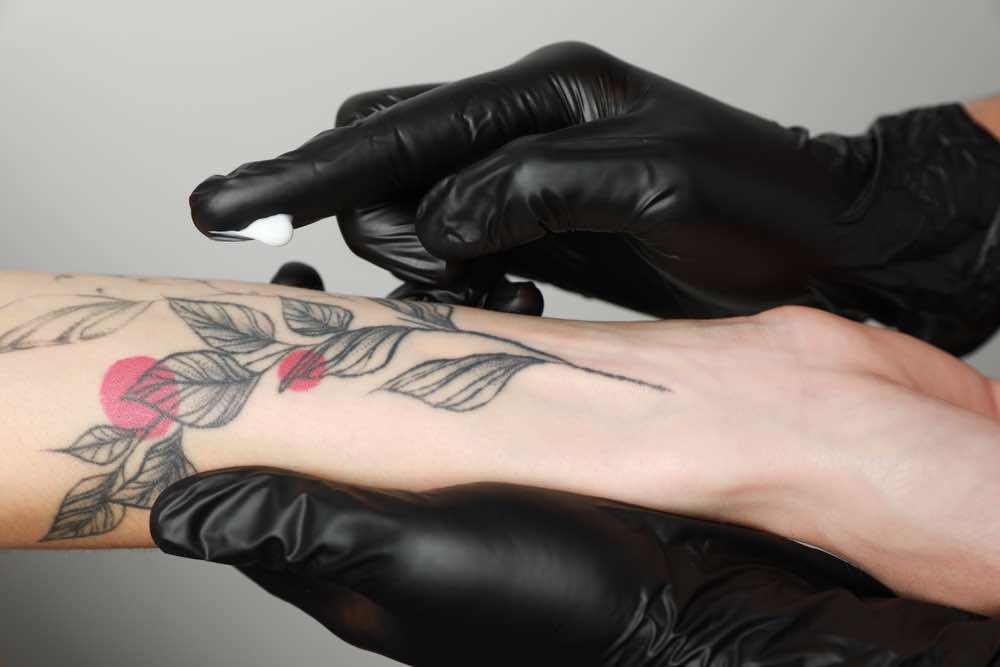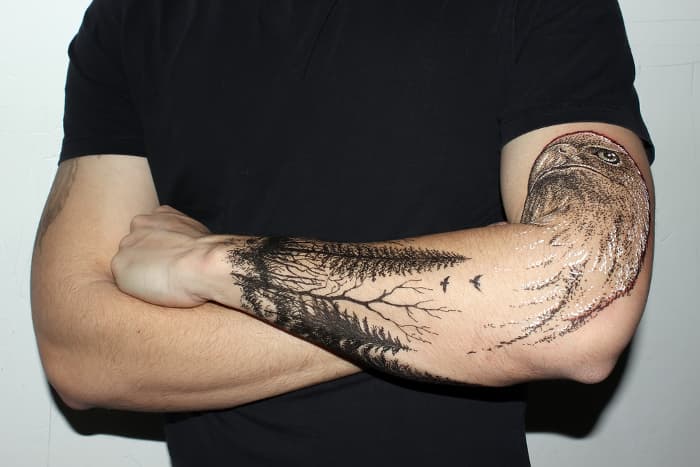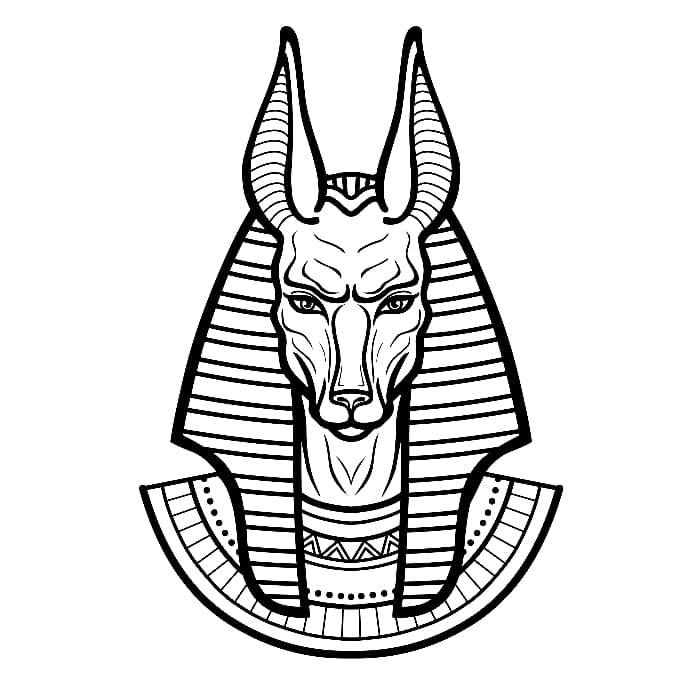Tattoos have long been a form of self-expression and a way for individuals to commemorate significant events, beliefs, or relationships. Throughout history, tattoo meanings have evolved and adapted to the cultural contexts in which they are found, often carrying with them deep personal or symbolic meanings. From simple minimalist designs to elaborate mythological or religious figures, tattoos are a unique way for individuals to communicate their personalities, values, and life experiences.

In recent years, there has been a growing interest in the various meanings and symbolism associated with different tattoo styles, designs, and placements. This increased attention has led to a resurgence in the popularity of tattoos in mainstream culture, as well as an exploration of the role tattoos play in society. As such, understanding the multifaceted meanings behind tattoo art can provide valuable insight into the diverse ways people choose to express themselves through this ancient form of body modification.
Key Takeaways
- Tattoos are a form of self-expression, carrying personal or symbolic meanings, and have been used throughout history.
- Meanings and symbolism vary between different tattoo styles, designs, and placements, reflecting individual beliefs and experiences.
- The popularity of tattoos has experienced a resurgence in contemporary culture due to growing interest in their unique meanings and societal roles.
Tattoo Meanings
Tattoos have been a form of personal expression for centuries, and their meanings can be as diverse as the people who wear them. In this section, we will delve into the symbolism and significance, as well as the cultural and religious meanings behind tattoos.
Symbolism and Significance
Tattoos often carry a deep symbolism, with each design holding a specific meaning or representing a particular concept. Some common symbols found in tattoos include:
- Semicolon: Represents mental health awareness, and the continuation of life despite challenges.
- Butterfly: Symbolizes transformation, change, and rebirth.
- Flower: Different flowers have unique meanings, such as love (roses), purity (lotus), or remembrance (forget-me-not).
The meanings behind these symbols can vary depending on the context, personal beliefs, or experiences of the wearer. It is essential to understand these variations when interpreting the message behind a tattoo.
Cultural and Religious Meanings
Tattoos can also have cultural and religious meanings. These designs often stem from the beliefs and customs of particular groups, serving as a way to express one’s identity, faith, or heritage. Some examples include:
- Celtic: Intricate knotwork and spirals symbolize eternity, interconnectedness, and spiritual growth.
- Polynesian: Tribal patterns convey information about the wearer’s rank, achievements, and ancestry.
- Buddhist: Images of Buddha, lotus flowers, and the Om symbol represent enlightenment, spiritual awakening, and the divine.
It is important to respect and appreciate the cultural and religious contexts of tattoo designs, particularly when adopting or creating design elements inspired by these traditions.
Popular Tattoo Styles and Designs
Types of Tattoos
There are numerous tattoo styles and designs that have gained popularity over the years. Each tattoo style is characterized by specific aesthetics and guidelines that artists follow to create unique and compelling designs. Some of the most popular tattoo styles include:
-
Traditional: This style, also known as Americana, is characterized by bold lines, bright colors, and iconic symbols like roses, eagles, and anchors. Traditional tattoos have a timeless appeal and have been a staple in the industry for decades.
-
Realism: Realistic tattoos involve creating lifelike representations of images, such as portraits, animals, and landscapes. The attention to detail and shading techniques used in this style require a high level of skill and precision from the tattoo artist.
-
Tribal: Tribal tattoos have their roots in ancient cultures and are characterized by the use of black ink, bold lines, and intricate patterns. These designs often hold deep cultural and spiritual symbolism, making them a popular choice for those looking to embody their heritage or beliefs.
-
Watercolor: Inspired by watercolor paintings, watercolor tattoos feature light, smoothly blended colors and are often characterized by designs such as flowers and animals. This style utilizes pastel colors like pinks and blues, giving the tattoo a soft and delicate appearance.
-
Geometric: Geometric tattoos consist of shapes, lines, and patterns that form intricate and visually striking designs. This style can be combined with other tattoo styles, such as realism or dotwork, for an even more unique and captivating piece.
When selecting a tattoo design, it’s essential to consider your personal preferences, the meaning behind the design, and how well it aligns with your chosen style. By confidently and knowledgeably exploring these various tattoo styles and designs, you can find the perfect piece that resonates with you.
Colors and Their Meanings
When choosing a tattoo, the color plays a significant role in conveying the intended meaning. Different colors hold various symbolic meanings and can add depth to your design. Here is a brief overview of some common tattoo colors and their meanings.
Black: Black is one of the most popular tattoo colors and is frequently used in tribal designs. It represents strength, power, and protection. Black is also associated with elegance and formality, making it a versatile choice for various tattoo styles.
White: White ink tattoos are often used to create subtle, discreet designs that are both delicate and sophisticated. These tattoos are associated with purity and innocence. White is also used to add highlights or subtle details to black or colored tattoos.
Red: Red is a bold and eye-catching color often used in tattoos to convey passion, love, and courage. It’s also associated with anger and aggression. Due to its vibrant hue, red tattoos can make a powerful statement and attract attention.
Blue: Blue is a calming and serene color that represents peace, loyalty, and wisdom. It is commonly found in nature and water-themed tattoos, as well as designs that symbolize trust and stability.
Green: Green is the color of life, growth, and renewal. It is often used in tattoos to symbolize harmony, nature, and the balance between the mind, body, and spirit. As a versatile pigment, green can also represent luck or jealousy.
Yellow: Yellow is a bright, attention-grabbing color, symbolizing happiness, energy, and positivity. It is often used in tattoos to convey warmth, sunshine, and creativity, making it a popular choice for designs that are cheerful and uplifting.
Purple: Purple is a mysterious and spiritual color, often associated with royalty, nobility, and wisdom. It is used in tattoos to denote power, luxury, and magic. In some cases, purple tattoos may also represent self-awareness and mindfulness.
Grey: Grey tattoos can be used to create depth, shadow, and texture within a design. This color is versatile and can represent neutrality, subtlety, and balance. Grey is often found in black and grey wash designs for its ability to blend and create more complex levels of shading.
Understanding the meanings behind these colors will help you choose the most appropriate pigments for your tattoo. Keep in mind your personal preferences and the significance of the design when selecting colors, as this can lead to a more profound and well-rounded tattoo experience.
Tattoo Placement and Meanings
Tattoo placement has a significant impact on the overall meaning and perception of the design. Each area of the body carries its connotations, which can magnify or alter the symbolism of the tattoo itself. Let’s dive into the meanings behind some common tattoo placements.
Forearms: Confidence and a desire to be noticed are associated with forearm tattoos. This placement showcases the design prominently, and unlike upper arm tattoos, it can’t be easily hidden. It can be an ideal choice for those who want their tattoos to be in the open and reflect their bold personality.
Neck: Neck tattoos often symbolize strength, courage, and resilience. They’re located near the throat, symbolizing a barrier or protection around one of the most vulnerable parts of the body. As neck tattoos are generally visible and can’t be easily concealed, they also indicate a strong commitment to and pride in one’s chosen design.
Shoulders: Representing protectiveness and responsibility, shoulder tattoos are often viewed as a symbol of safeguarding one’s self or loved ones. The broad expanse of skin in the shoulder area presents a solid canvas for large designs and lends itself well to tribal or geometric patterns.
Chest: Individuality and uniqueness are often expressed through chest tattoos, as this placement allows for highly personal designs close to the heart. With a large surface area, it’s ideal for intricate art and can be easily hidden or showcased depending on wardrobe choices. The pain level for chest tattoos is relatively high, which adds to the meaning of resilience and commitment.
Back: The back serves as a canvas for tattoos signifying strength, power, and triumph. The vast expanse of skin allows for larger, more complex designs that can be easily concealed or displayed at will. Popular back tattoos include intricate designs like full-back murals or tribal motifs that cover a sizable portion of the back.
Angle and placement are crucial for any tattoo, as they can subtly or drastically change the meaning and visual effect. A tattoo placed at a unique angle may convey a sense of playfulness or exploration, whereas a symmetrical design may symbolize balance and stability.
Inspirational Tattoos
Inspirational tattoos often carry strong meanings and symbolism to the wearer, providing guidance, strength, magic, and inspiration. These tattoos can range in size, design, and placement, but their ultimate goal is to uplift and support the individual through various stages of life.
One popular type of inspirational tattoo is the quote tattoo. This can be a word or a phrase, carrying a positive message or simply reminding the wearer of their inner strength. Sometimes, these quotes are sourced from favorite books, movies, or influential individuals.
Another type is symbol tattoos that represent strength and resilience. These symbols can vary across different cultures and belief systems. For instance, a lion represents courage and power, while an anchor symbolizes stability and grounding. Similarly, the lotus flower stands for rebirth and spiritual growth in various Eastern philosophies.
Guidance tattoos often feature symbols or objects related to navigation or personal growth. Examples include compass designs, representing the ability to find one’s way, or a lighthouse that symbolizes guidance and hope in times of darkness.
Magical tattoos incorporate elements of wonder, enchantment, and the supernatural. Oftentimes, these tattoos include creatures like dragons, phoenixes, or mythical beings like fairies. They serve as a reminder of the magic that exists both within and around us.
Through a combination of meaningful quotes, symbols, and designs, inspirational tattoos can positively impact their wearers by offering guidance, strength, magic, and inspiration. By choosing a tattoo that resonates with their personal story or beliefs, individuals can find solace in their ink and embrace the journey ahead.
Mental Health Tattoos
Mental health tattoos have become increasingly popular as a means of expressing one’s personal struggle with mental health issues, raising awareness, and showing solidarity with others facing similar challenges. These tattoos often incorporate symbols, phrases, or images that hold deep meaning for the wearer and can serve as a reminder of their journey towards healing and growth.
One of the most well-known mental health tattoos is the semicolon tattoo. The semicolon is a symbol of survival and solidarity between those living with mental health issues such as depression, anxiety, and other emotional struggles. The semicolon represents a pause in a sentence – not an end – which signifies that the wearer’s personal story continues, despite facing challenges and adversity. By getting a semicolon tattoo, individuals show their commitment to supporting themselves, others who are struggling, and the broader conversation around mental health awareness.
Depression tattoos specifically focus on the experience of battling depression and often incorporate visual representations of strength, hope, and resilience. Some common themes within depression tattoos include anchors, which symbolize stability and grounding; birds, which represent freedom and the ability to rise above one’s struggles; and uplifting quotes or statements to remind the wearer of their inner strength.
Mental health tattoos go beyond just semicolon and depression designs. Other representations include images of struggles with anxiety, trauma, and grief. By choosing a design that holds personal significance, individuals can create a symbol that represents their unique mental health journey, instills a sense of purpose, and fosters a connection with others who share similar experiences.
Commemorative Tattoos
Commemorative tattoos are a powerful way to honor the memory of a loved one who has passed away. These tattoos not only serve as a permanent reminder of the person they memorialize but also offer a unique way for the wearer to express their grief and celebrate the life of their loved one.
There are myriad options and styles available for commemorative tattoos. Many people choose to incorporate quotes from their loved ones or meaningful phrases that represent their relationship. These quotes can come from conversations, letters, or even cherished books that hold a special significance for both the deceased and the person getting the tattoo.
In addition to quotes, incorporating symbols and images that represent the loved one is another popular choice for commemorative tattoos. These can range from their favorite flower, a cherished portrait, or an object of significance for them. The key here is to choose a design that truly embodies the memory and essence of the person being honored with the tattoo.
Selecting the right commemorative tattoo can provide a sense of closure and aid the grieving process. In many cases, tattoos serve as a positive reminder of the bond and love shared with the deceased, allowing the wearer to carry a piece of their memory with them wherever they go.
Permanent Makeup Tattoos
Permanent makeup tattoos are a growing trend in the beauty industry, offering an alternative solution for individuals who want a lasting yet natural appearance without the hassle of applying makeup daily. They’re cosmetic tattoos that recreate the look of makeup on various facial features, such as eyebrows, eyeliner, and lips.
Eyebrow tattoos, often performed through a method called microblading, are ideal for those with faint, sparse, or nonexistent eyebrows. Microblading involves using a semi-permanent pigment to create the appearance of individual hair strokes, filling in gaps and giving the brows a fuller, more defined look. Different styles can be achieved depending on the desired outcome, including clean, arched, or fluffy eyebrows.
Another popular permanent makeup option is eyeliner tattooing, which fills in the spaces between the lashes for a thicker, darker, and fuller lash line. This technique, known as invisible eyeliner, provides a subtle enhancement without looking overly lined or obvious.
Lip tattoos provide long-lasting color and definition to the lips, eliminating the need for daily lip makeup application. They can help create a fuller appearance, correct asymmetry, and improve the overall shape and color of the lips. Pigments are carefully selected to match the client’s desired look, whether that’s a soft, natural hue or a bolder, richer shade.
When considering permanent makeup tattoos, it’s important to research qualified and experienced professionals, as the process involves implanting pigments into the skin and requires a high level of precision. The use of quality pigments and proper techniques can ensure a safe and satisfactory outcome that will enhance one’s appearance and reduce the time spent on makeup application.
Tattoos in Society
Tattoos in the Military
Tattoos have played a significant role in the military throughout history. They often serve as a means of identification, camaraderie, and expression of personal experiences or beliefs. In ancient Rome, soldiers often got tattoos displaying their legion number or unit insignia. In more recent times, military tattoos may depict symbols such as the American flag, an anchor, or specific military branches or units. Some popular tattoo designs among military members include:
- Anchor tattoos: Representing strength and stability, often associated with the Navy and maritime service.
- Star tattoos: Symbolizing guidance, aspiration, and achievement, star tattoos can reflect one’s ambition and determination in their military career.
- Roman numerals: Used to signify important dates, events, or milestones, often representing military deployments or anniversaries.
Tattooing in Ancient Cultures
In ancient cultures, tattooing was a widespread practice, often holding deep significance within their respective communities. Tattoos served various purposes, including:
- Marking: Denoting one’s status, accomplishments, or affiliations.
- Spiritual protection: Used to ward off evil spirits or invoke the protection of a deity.
- Legend: Depicting important legends, myths, or historical events.
In Maori and Polynesian societies, intricate patterns and markings were used to signify a person’s rank, ancestry, or skill sets. In ancient Egypt, tattoos were often associated with women, displaying floral patterns or messages of devotion.
Tattoos in Modern Cultures
Today, tattoos are embraced by various cultures and communities worldwide. As a form of self-expression and individuality, modern tattoos range from simple symbols to complex artwork. Some of the popular trends and designs in contemporary tattooing include:
- Owl tattoos: Symbolizing wisdom, knowledge, and mystery.
- Floral tattoos: Representing beauty, growth, and femininity, often featuring flowers such as roses, lilies, or cherry blossoms.
- Drum tattoos: Depicting traditional or cultural drum patterns reflecting a person’s love for music or connection to their heritage.
Tattoo ink has evolved over time, with modern pigments offering more vibrant and long-lasting colors. Additionally, the skill and practice of tattoo artists have advanced, resulting in a diverse range of styles and techniques.
As tattoos have become more widely accepted, the meaning and reasons behind one’s choice to get a tattoo often vary significantly, from personal storytelling to artistic expression or identification with a community or group. In contemporary society, tattoos continue to evolve as a dynamic form of self-expression and cultural significance.
Unique Tattoos and Their Meanings
Tattoos serve as artistic expressions of individuality, carrying their own unique meanings depending on the design and the person sporting it. Here, we explore some remarkable tattoo symbols and their meanings:
Fish Tattoo: Fish tattoos are rich in symbolism and often represent abundance, adaptability, and freedom. For instance, koi fish are known to signify courage, perseverance, and good fortune, while other fish tattoos may embody the wearer’s zodiac sign, like the Pisces symbol.
Scorpion Tattoo: A scorpion tattoo may signify various traits, such as strength, protection, and intimidation. As a powerful creature in nature, scorpion designs also represent transformation and resilience. In astrology, this tattoo can express one’s alignment with the Scorpio zodiac sign, showcasing their passionate, mysterious, and determined nature.
Cross Tattoo: Cross tattoos are often associated with spirituality, faith, and religious devotion. Various designs of the cross symbol, like the Celtic cross or the Orthodox cross, may have specific meanings connected to the wearer’s religious or cultural background. In addition, some people choose a cross tattoo as a symbol of protection, imbued with personal meaning.
X Tattoo: The X tattoo symbolizes a range of meanings, from rebellion and individuality to mystery and hidden significance. This design can also stand for a significant moment, person, or decision in life, representing the idea of “marking the spot.” In Roman numerals, the X can denote the number ten, which may hold personal relevance for the wearer.
Perseverance: Tattoos that signify perseverance and determination can take many forms, such as an anchor, rose, or even a semicolon. These designs represent the wearer’s strength in overcoming obstacles or the journey towards personal growth. Ultimately, the chosen tattoo is deeply connected to the individual’s story and signifies their resilience.
Each tattoo holds a personal meaning for the one who wears it. Design elements, cultural connections, and individual experiences all contribute to the significance of these expressive art forms. Choosing the right symbol can create a profound connection between the wearer and the tattoo’s meaning, making it a lasting and meaningful representation of who they are.
Tattooing Process
The tattooing process is an ancient practice of creating indelible body art with the insertion of pigment or ink into the skin’s dermis layer. This technique has evolved over time, but the basic premise of staining the skin with pigment remains unchanged. Let’s dive into the process step-by-step, keeping a clear, neutral, and knowledgeable tone.
First, to begin the tattooing process, a skilled artist will use a sterilized tattoo machine, which has a needle that rapidly pricks the skin. This sharp needle punctures through the outer layer of the skin, the epidermis, and deposits the ink into the dermis, the deeper layer of skin. The dermis contains the immune system cells, which react to the ink particles as foreign invaders and work to encapsulate them, causing the tattoo to be permanent.
The process usually starts with selecting the right tattoo salon and artist, who will guide the client through the design process and ensure the desired artwork is suitable for the chosen location on the body. This also includes discussing the colors and details of the tattoo.
In the actual tattooing process, the artist will first clean the skin with disinfectants to minimize the risk of infection. Then, they will create an outline of the design on the skin using a stencil or freehand drawing, depending on the complexity and style of the tattoo. The tattoo machine is then used to trace the pattern, ensuring the ink is properly inserted into the skin’s dermis layer.
After the outline is finished, the artist will move on to shading and coloring the tattoo. This step requires precise control of the tattoo machine, as the artist needs to create the desired depth and saturation of color to bring the design to life. Different needles might be used for shading and coloring, providing various effects within the design.
Finally, once the tattooing process is complete, the artist will clean the area again and apply a protective bandage or wrap to the tattooed skin. This helps prevent infection and allows the skin to begin the healing process.
It is important to note that proper aftercare is essential for a successful tattoo healing process. Clients should follow the artist’s advice on caring for their new body art, including keeping the area clean, avoiding direct sunlight, and refraining from picking or scratching the tattoo.
Throughout the entire tattooing process, the artist’s focus should be on maintaining a high level of cleanliness, accuracy, and skill to ensure the client receives the desired design. With proper care and respect for the art form, tattooing can result in a beautiful and meaningful form of self-expression.



